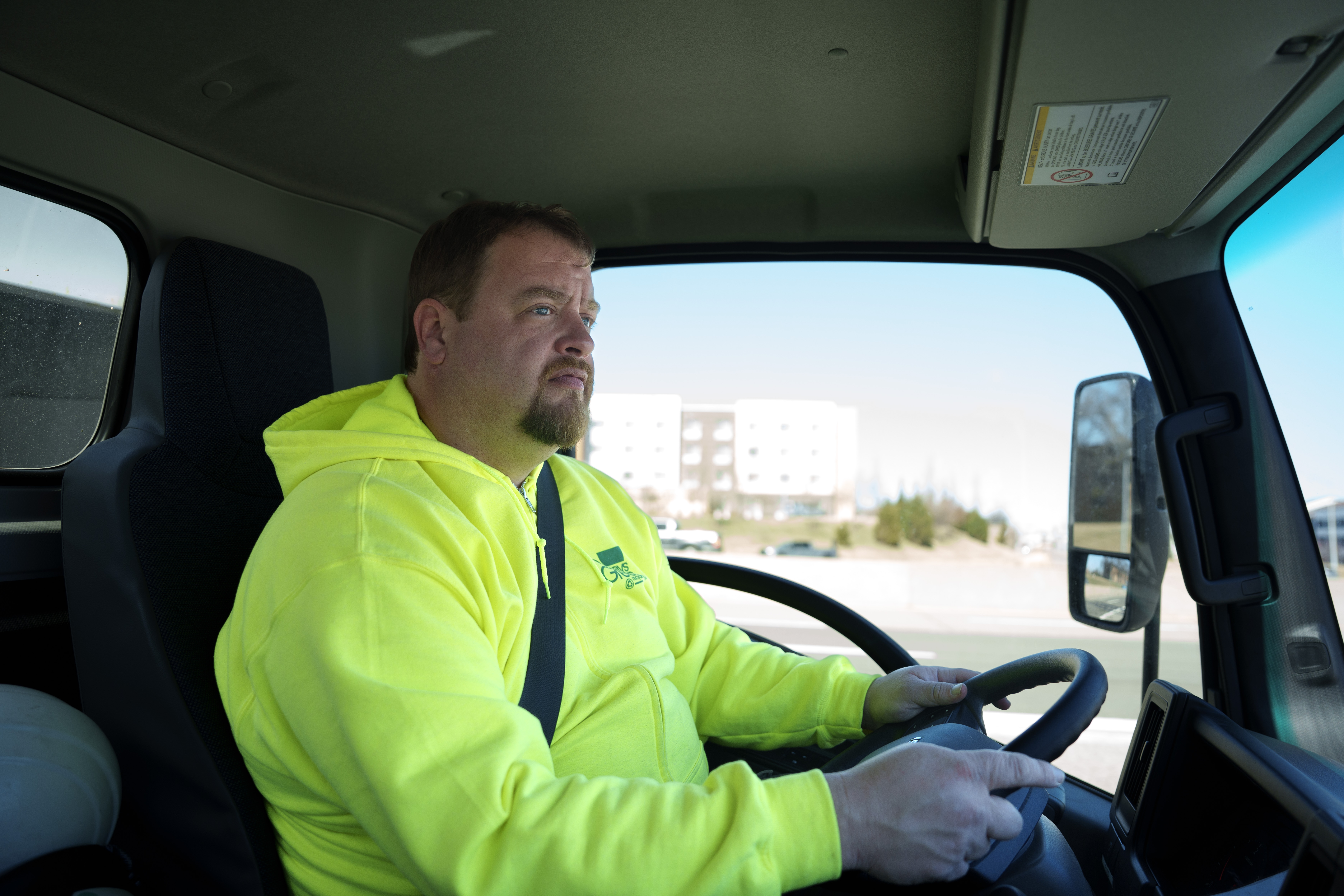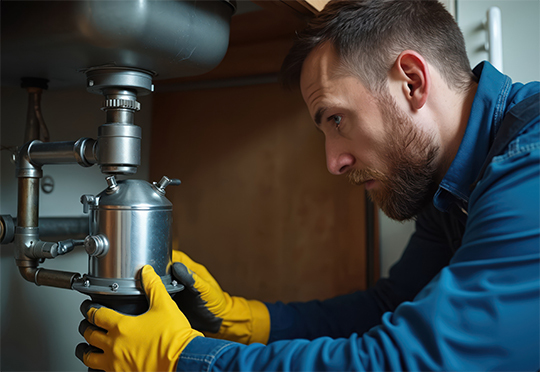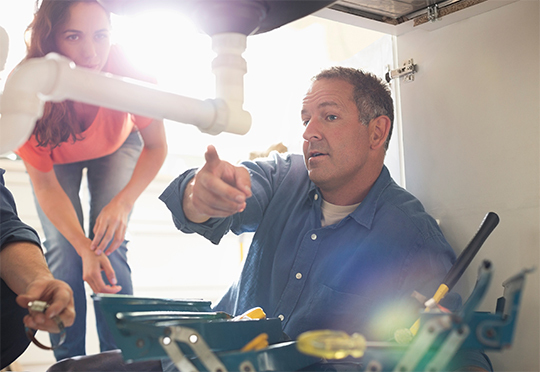
What is Your Service Fleet's Risk Profile?
This shouldn’t come as a surprise, but a local landscaping business hauling a trailer of mowers faces different challenges than an HVAC technician carrying compressors, or a national carrier logging hundreds of highway miles each week. What they do share is the need for a safety program that reflects the realities of their day-to-day work.
By recognizing their unique safety challenges upfront, fleet managers can set clear practices that minimize accidents, lower liability, and keep business moving when it matters most.
HVAC
The bulk of risk for HVAC fleets revolves around the dual challenge of transporting expensive equipment and working under demanding seasonal schedules. Technicians often transport compressors, coils, and specialized tools that make secure loading and storage practices key priorities (both to ward off damage in transit and theft). Using GPS tool tracking for these large, high dollar items, can also help track them if something were to go missing.
Also, remember HVAC jobs frequently include ventilation work in places where heating or cooling systems aren’t functioning properly — your loading and storage process should be straightforward enough to follow even after several exhausting hours spent working in a stuffy attic during peak summer and winter months.
Keys for HVAC safety: Driver training on load securement, policies to manage fatigue during seasonal spikes, and protocols for protecting workers from heat exposure while servicing equipment in confined spaces. Training on proper driving techniques with heavy equipment can also help technicians.
Plumbing
Some commercial vehicles might steer reasonably clear of ever exceeding their maximum cargo capacity; unfortunately, cargo overload is a legitimate risk for dedicated plumbing service vehicles hauling gear from job to job.
By “gear” we mean all things necessary to service a variety of plumbing catastrophes: machinery, piping, plumbing appliances (e.g. water heaters or softeners), adhesives, tanks, solvents, chemicals requiring special handling — that sort of thing.
Bearing in mind how professional plumbers are often called upon to report at inconvenient hours to resolve emergencies in wet, confined, and/or “unfinished” spaces, you can see why those in the business of risk management may want to establish some company-wide “dos and don’ts” before an urgent job goes south. It’s also wise to adopt GPS tracking for dispatching and routing to steer clear of road hazards and locate the most direct routes to jobsites.
Keys for plumbing safety: Regular training on chemical handling and transport, foolproof fall-prevention practices at worksites, simple procedure or checklist for taking emergency calls, GPS tracking devices or apps.
Lawn care and landscaping
Landscaping vehicles rarely travel light; trailers loaded with mowers, trimmers, and other bulky equipment make load securement and trailer safety a chief concern. Likewise, there's an inherent risk of theft anytime you’re in the business of leaving valuable (and portable) tools at a worksite for multiple days, as is often the case for landscapers.
When on the job, the risk of property damage is a constant concern as grounds crews spend long hours in the sun operating heavy machinery on client sites.
Keys for lawn and landscaping safety: Tool trackers and dash cams to ward off theft and keep tabs on valuable equipment from job to job, trailer safety and securement training, heat stress protocols and property-damage prevention guidelines.
Contractors and construction
Construction jobs are highly variable. They’re as likely to call for a flatbed or heavy-duty vehicle as a borrowed pickup truck — it just depends on the right tool for the job. For the moment, let’s stick with the jobs requiring delivery of oversized machinery or raw materials, as these tend to pose the greatest safety risk.
On roadways, large loads and slow-moving vehicles face increased accident exposure; on jobsites, crews must contend with heavy machinery and dangerous conditions. In both cases, oversized or extra-dimensional loads make load securement a major safety concern (fleets may also suffer the wrath of state law enforcement without the proper permits).
Parked and/or unattended equipment also poses a heightened risk of theft, be it in transit or left overnight at jobsites.
Keys for construction safety: Load securement expertise, heavy or oversized vehicle training, clearly established jobsite safety practices and full CDL/DOT compliance. GPS, tool trackers, and dash cams to secure valuable construction vehicles and equipment.
Emergency services
Emergency units operate almost exclusively in high-stress environments (thus the name). As such, some dangers are calculated risks on the part of the crew operating the vehicle.
Ambulances and firetrucks are permitted to move with life-saving urgency in ways that aren’t typically allowed on roadways, having previously received the training and authority to manage such situations.
Working in emergency services naturally invites some risk, but it’s also a field governed by strict processes designed to minimize the inherent dangers involved. When followed (and by that we mean the emergency crews as well as civilians in the vicinity), these practices are what allow an emergency vehicle to safely approach an intersection at high speeds in the middle of afternoon traffic. Emergency vehicles are also frequently assisted by GPS trackers wired to find optimal routes and avoid heavy traffic, road closures and other hazards.
As far as those responsible for fleet safety, the big concern is how much weight that “when followed” is asked to bear — procedures for emergency vehicles have to be clear and simple enough for every driver on the road to follow, even (and especially) in times of heightened stress.
Keys for emergency service safety: GPS trackers for critical routing assistance, dash cams for driver safety and advanced driver training on real-world emergency conditions, fatigue management practices, clear liability and public interaction protocols.
Carriers
There are a lot of variables to consider when determining a carrier fleet’s risk profile. Does the carrier operate locally or within a broader region? Does it specialize in specific cargo types (“we are the most trusted pommelhorse transporters of southern Oregon!”) or is it a do-it-all carrier with a fleet of vehicles ready to move oversized, partial and even HAZMAT loads?
Carriers exclusive to one cargo type will naturally have more detailed loading and securing practices compared to those looking to fill more general shipping needs. Likewise, carriers operating in a certain region known for harsh winters or flooding will likely have better training and equipment on hand to deal with these challenges.
Still, there are a few common threads connecting every carrier fleet in terms of risk. Mileage can climb quickly and demands regular preventative vehicle maintenance to avoid disaster. Hours of service compliance (both following it and tracking it) is required nationwide.
Cargo security, including locating safe parking and storage options, presents a challenge to virtually every carrier in a climate where insurance premiums continue to rise (often fueled by nuclear verdicts tied to preventable accidents).
Keys for carrier safety: Driver HoS and fatigue management, accident-prevention training, cargo security protocols, internal regulatory compliance reviews, dash cams for coaching safe driving practices and added protection from false claims/liability issues.
Understanding your fleet’s unique strengths, weaknesses, and priorities when it comes to safety concerns is essential to establishing an effective safety program. Check out our step-by-step guide to building a safety program for more.
From assessment to action
Whether you manage a pair of vans or a fleet of vehicles numbering in the hundreds, recognizing your unique risk profile is the first step in creating safer, more resilient operations. Each type of service or carrier fleet comes with its own set of challenges — understanding which of these affect your fleet the most is foundational to proactively protecting your people, equipment and your reputation on the road.



